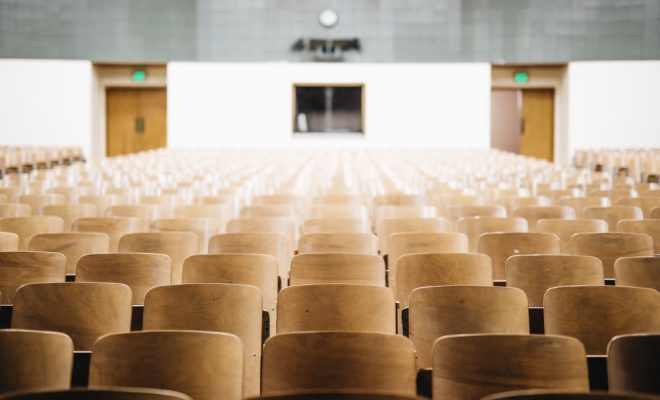3 Issues that are hurting the American Educational System

Introduction: Understanding the Challenges Facing Education
The American educational system, often heralded as a pillar of democracy and opportunity, is currently grappling with several significant challenges that threaten its effectiveness and accessibility. As educational standards strive to evolve and adapt to the needs of a diverse population, three key issues stand out: inadequate funding, educational inequity, and the overemphasis on standardized testing. These problems not only hinder student achievement but also undermine the potential for a well-rounded education that prepares young people for the complexities of modern society.
Inadequate Funding: The Financial Strain on Education
One of the most pressing issues facing the American educational system is inadequate funding. Despite education being a critical investment in the country’s future, many schools operate under severe financial constraints. This lack of funding manifests in various detrimental ways, impacting the quality of education students receive.
Resource Limitations: Schools with limited budgets often struggle to provide essential resources such as textbooks, technology, and extracurricular activities. This scarcity can lead to outdated learning materials, which in turn affects students’ engagement and understanding of the curriculum. For instance, in many underfunded districts, students may not have access to the latest technology, putting them at a disadvantage in an increasingly digital world.
Teacher Salaries and Retention: Insufficient funding also translates to lower teacher salaries, which can lead to high turnover rates. When teachers are underpaid, it becomes difficult to attract and retain qualified educators. This instability harms student learning, as a revolving door of teachers disrupts continuity and hinders relationship-building between educators and students. Moreover, experienced teachers often leave the profession for better-paying opportunities, resulting in classrooms staffed by less experienced or unqualified individuals.
Impact of Economic Disparities: Funding for public schools is often derived from local property taxes, creating a disparity that disproportionately affects schools in low-income areas. Wealthier districts can levy higher taxes, resulting in more substantial funding for their schools, while underfunded schools struggle to provide basic educational services. This economic inequality exacerbates the existing achievement gap, leaving disadvantaged students with fewer opportunities to succeed.
Educational Inequity: Disparities in Access and Quality
Alongside funding issues, educational inequity remains a significant barrier to a fair education for all students. This inequity manifests in various forms, including socioeconomic status, race, and geographic location.
Socioeconomic Disparities: Students from low-income families often attend underfunded schools, where resources are scarce, and class sizes are large. Such environments can hinder their academic performance and limit their future opportunities. The lack of access to enrichment programs, tutoring, and essential support services can perpetuate a cycle of poverty and educational disadvantage.
Racial and Ethnic Inequities: Disparities in educational quality also disproportionately affect students of color. For example, schools in predominantly minority neighborhoods often receive less funding and have higher teacher turnover rates. This not only affects the quality of education but also shapes students’ perspectives on their own potential and future. The systemic nature of these inequities calls for comprehensive policy changes aimed at ensuring that every student, regardless of their background, has access to a high-quality education.
Geographic Disparities: Rural and urban areas face unique challenges regarding educational access and quality. In rural areas, students may have limited access to advanced coursework and extracurricular activities due to a lack of resources and qualified teachers. In urban settings, overcrowded classrooms and high dropout rates can create an environment where students struggle to thrive. Addressing these geographic disparities requires targeted interventions and investments that consider the specific needs of diverse communities.
Overemphasis on Standardized Testing: The Testing Trap
The American educational system’s overreliance on standardized testing is another critical issue that negatively impacts student learning and teaching practices. While assessments can provide valuable insights into student progress, the current emphasis on high-stakes testing can lead to unintended consequences.
Teaching to the Test: Many educators feel pressured to focus their teaching on test preparation rather than fostering a broader understanding of the subject matter. This “teaching to the test” approach can stifle creativity and critical thinking, as teachers prioritize test scores over meaningful learning experiences. Students may become adept at taking tests but lack a deep comprehension of the material, which can hinder their ability to engage with complex concepts.
Stress and Anxiety: The pressure associated with standardized testing can also contribute to heightened levels of stress and anxiety among students. The fear of poor performance can lead to a negative educational experience, where students focus more on avoiding failure than embracing learning. This not only affects their mental health but can also diminish their motivation to learn and succeed academically.
Narrowing the Curriculum: In response to testing pressures, many schools have narrowed their curricula to focus on tested subjects like math and reading, often at the expense of the arts, physical education, and social studies. This limitation restricts students’ opportunities for a well-rounded education and diminishes the development of critical life skills, such as creativity, collaboration, and communication.
Conclusion: The Path Forward for American Education
The American educational system is at a crossroads, facing significant challenges that require urgent attention and action. Inadequate funding, educational inequity, and the overemphasis on standardized testing are issues that hinder the potential of students and educators alike. Addressing these challenges will require a concerted effort from policymakers, educators, and communities to invest in sustainable solutions that prioritize equitable access to quality education for all students.
As society continues to evolve, so too must the educational system. By fostering an environment that values diversity, inclusivity, and holistic learning, America can work toward an educational system that empowers every student to reach their full potential and contribute positively to society.





